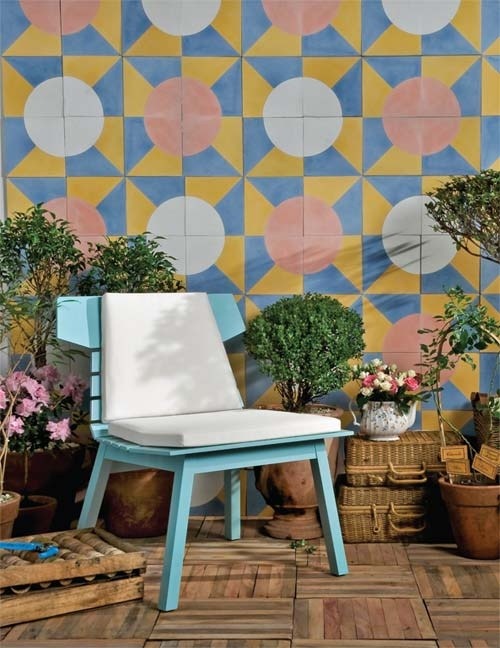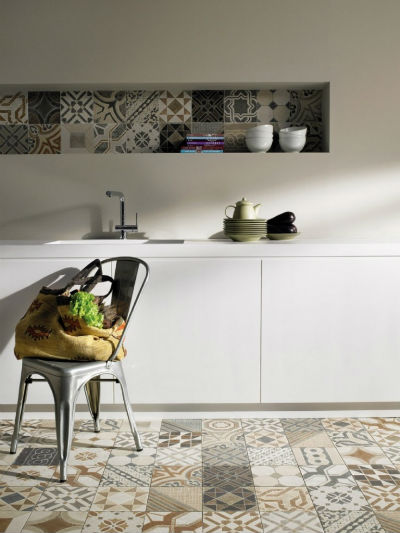This past week I read at A Ervilha Cor de Rosa a post about encaustic cement tiles. A few years ago I would passthese and would not give them much thought, but nowadays looking at a floor (or wall!) that has them will make my day! But what is encaustic cement tile and what’s the story behind it?
Encaustic cement tiles – or hydraulic tiles - are completely handmade made from cement that is hardened through a hydraulic press instead of being baked. The art of encaustic cement tiles was born in southern France in the late 19th century, but spread largely to Spain, Italy, England and Portugal. It was popular for its resistance and decorative qualities: with encaustic cement tiles you can tell several different stories. It was considered exclusive to the upper class of the time due to its manual manufacturing process.
With the industrialization of the 60s other less elaborate and more profitable materials gradually replaced it and it was, eventually, forgotten and almost disappeared. However, in recent years we have witnessed a reuse of this material in contemporary architecture with retro touches. Therefore, we’re entering a major new phase of manufacture. Of course this new phase, as Rosa Pomar said in her post "mosaico hidráulico 2.0", has both good and bad consequences. The good? The new impulse due to the vintage and retro trend going on right now, resulting in more fans and more manufacturers and invariably more options. The bad? Poor quality imitations in which the pattern is printed.
The real encaustic cement tile still has to be produced as it was originally; despite the technological advances, it is still impossible to industrially reproduce the colors, matte finish and soft texture of the handmade mosaic.
Marta.
 |
| via pinterest |
 |
| via pinterest |
 |
| via oppa |
 |
| via mosaic del sur |
 |
| via mosaic del sur |
 |
| via arquitete |
 |
| via egue & seta |

No comments :
Post a Comment